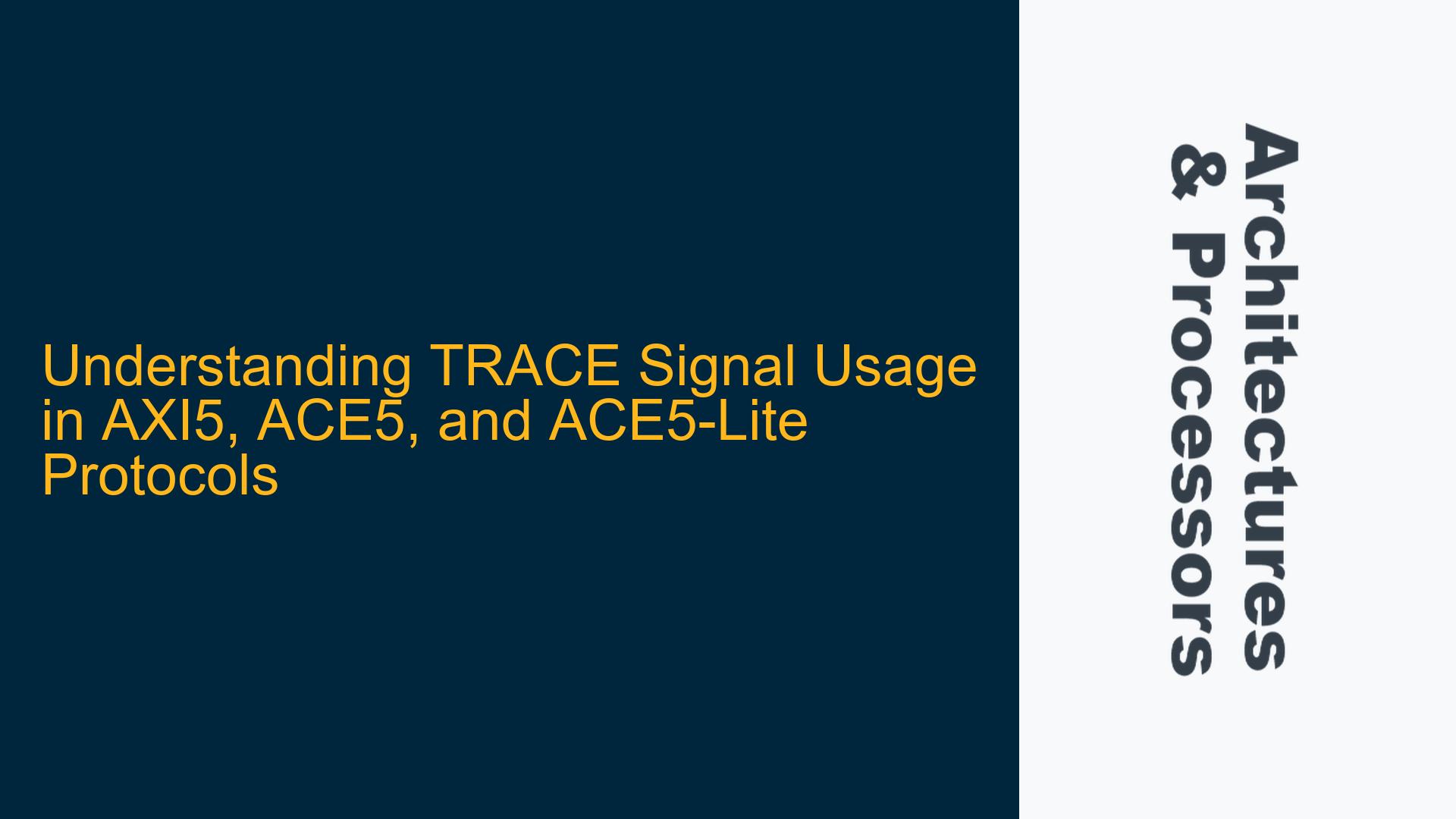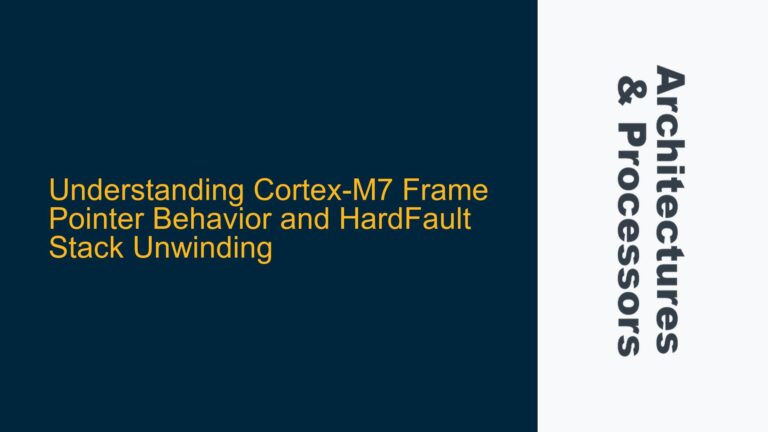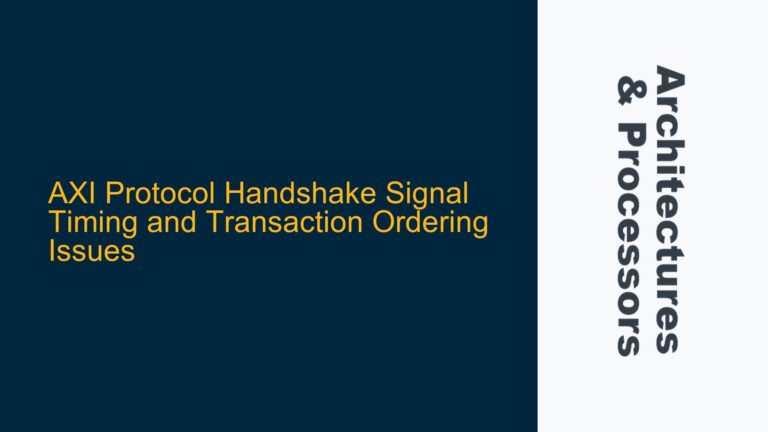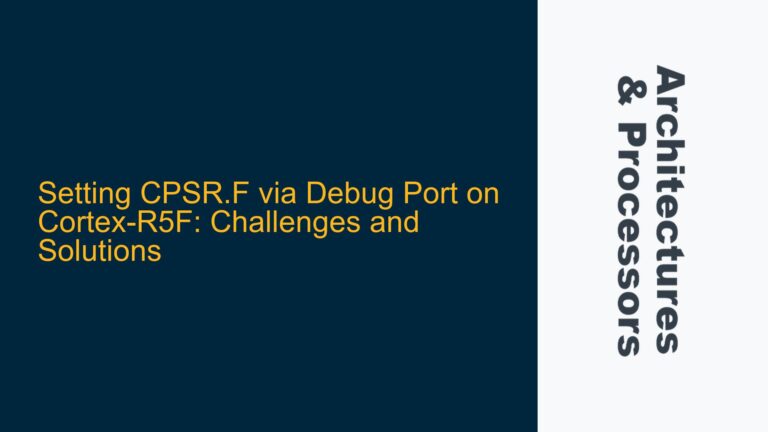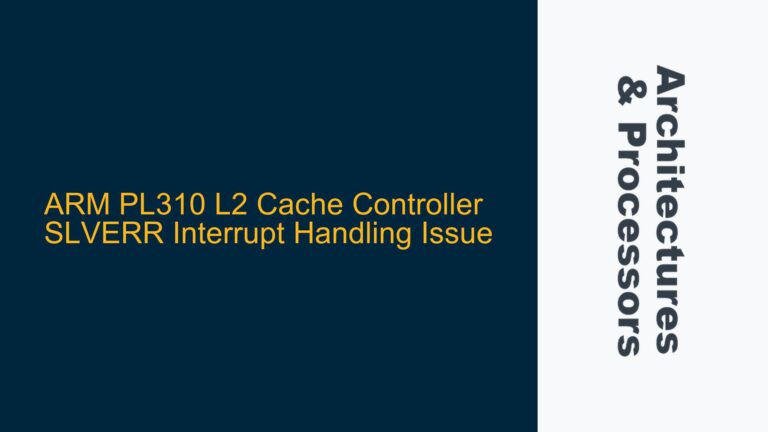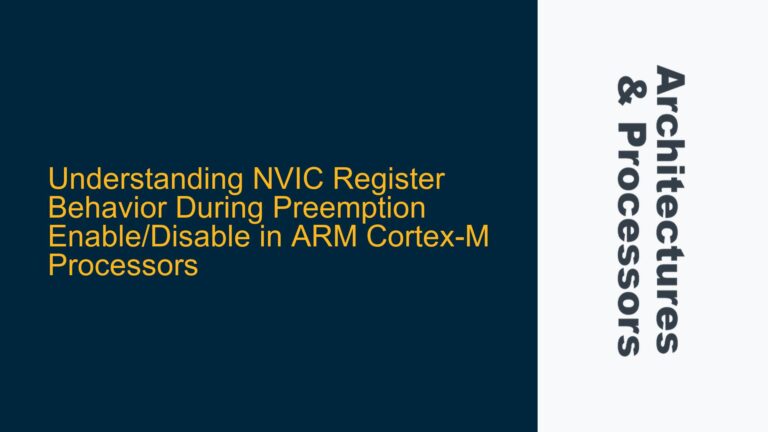TRACE Signal Functionality in AXI5, ACE5, and ACE5-Lite Channels
The TRACE signal in AXI5, ACE5, and ACE5-Lite protocols plays a critical role in system-level debugging and performance monitoring. It is primarily used to provide visibility into transaction paths and data origins, particularly in systems with multiple masters, slaves, and cache-coherent interconnects like the CCI-550. The TRACE signal is not a mandatory signal in all implementations but is highly recommended for systems requiring detailed transaction tracing and debugging capabilities.
In AXI5, the TRACE signal is used to indicate the source of data during read transactions. For example, when a master reads data, the TRACE signal can differentiate whether the data is coming from a snooped master (indicating a cache hit) or directly from the targeted slave (indicating a snoop miss). This distinction is crucial for understanding cache behavior and optimizing system performance.
In ACE5 and ACE5-Lite, the TRACE signal extends its functionality to support cache coherency protocols. It helps in tracking the flow of coherent transactions, such as snoop requests and responses, across the interconnect. This is particularly useful in systems with multiple cache-coherent masters, where understanding the transaction flow is essential for debugging coherency issues and ensuring correct system behavior.
The TRACE signal is typically implemented as part of the read and write data channels in AXI5, ACE5, and ACE5-Lite. Its usage is defined in the ARM AMBA specifications, particularly in the IHI0022 document, which provides detailed guidelines on its implementation and expected behavior.
Potential Misconfigurations and Misunderstandings of TRACE Signal Usage
One common issue with the TRACE signal is its misconfiguration or misunderstanding in complex systems. For instance, in systems with multiple cache-coherent masters, the TRACE signal might not be correctly propagated through the interconnect, leading to incorrect tracing of transaction paths. This can result in misleading debug information and make it difficult to identify the root cause of coherency or performance issues.
Another potential issue is the incorrect interpretation of the TRACE signal values. For example, a low RTRACE signal during a read transaction might be misinterpreted as a cache hit when it is actually a cache miss due to a misconfigured snoop filter or interconnect. Similarly, a high RTRACE signal might be incorrectly assumed to indicate a direct slave response when it is actually a result of a snoop hit from another master.
In systems using the CCI-550 interconnect, the TRACE signal is particularly important for distinguishing between snooped and non-snooped transactions. However, if the interconnect is not properly configured to handle the TRACE signal, it might not correctly reflect the transaction path, leading to incorrect debug information. This can be especially problematic in systems with complex cache hierarchies and multiple levels of interconnects.
Additionally, the TRACE signal might not be consistently implemented across different IP blocks in the system. For example, some masters or slaves might not support the TRACE signal, or might implement it differently, leading to inconsistencies in the debug information. This can make it difficult to correlate transaction paths across different parts of the system and identify the root cause of issues.
Implementing and Verifying Correct TRACE Signal Behavior
To ensure correct implementation and usage of the TRACE signal, it is essential to follow a systematic approach that includes design, verification, and debugging steps. The first step is to carefully review the ARM AMBA specifications, particularly the IHI0022 document, to understand the expected behavior of the TRACE signal in AXI5, ACE5, and ACE5-Lite protocols. This includes understanding the signal’s role in differentiating between snooped and non-snooped transactions, as well as its usage in cache-coherent systems.
During the design phase, it is important to ensure that the TRACE signal is correctly implemented in all relevant IP blocks, including masters, slaves, and interconnects. This includes configuring the interconnect to correctly propagate the TRACE signal and ensuring that all IP blocks support the signal as required by the system design. In systems using the CCI-550 interconnect, special attention should be paid to configuring the snoop filter and ensuring that the TRACE signal correctly reflects the transaction path.
In the verification phase, it is essential to include test cases that specifically target the TRACE signal. This includes testing scenarios where the TRACE signal is used to differentiate between snooped and non-snooped transactions, as well as scenarios where the signal is used to trace transaction paths in cache-coherent systems. These test cases should be designed to cover all possible corner cases, including scenarios with multiple cache-coherent masters, complex cache hierarchies, and multiple levels of interconnects.
One effective verification strategy is to use a combination of simulation and formal verification techniques. Simulation can be used to test the TRACE signal in a wide range of scenarios, while formal verification can be used to prove that the signal behaves correctly in all possible cases. This is particularly important for ensuring that the TRACE signal correctly reflects the transaction path in complex systems with multiple cache-coherent masters and interconnects.
During the debugging phase, the TRACE signal can be used to trace transaction paths and identify the root cause of issues. For example, if a read transaction is returning incorrect data, the TRACE signal can be used to determine whether the data is coming from a snooped master or directly from the targeted slave. This can help identify issues with the snoop filter, interconnect, or cache hierarchy.
In systems where the TRACE signal is not consistently implemented across all IP blocks, it might be necessary to add additional debug logic to ensure that the signal is correctly propagated and interpreted. This can include adding custom logic to the interconnect or using debug tools to trace the signal across different parts of the system.
Finally, it is important to document the implementation and usage of the TRACE signal in the system design. This includes documenting the expected behavior of the signal in different scenarios, as well as any custom logic or debug tools that have been added to support the signal. This documentation can be invaluable for future debugging and optimization efforts, as well as for ensuring that the signal is correctly implemented in future designs.
In conclusion, the TRACE signal is a powerful tool for debugging and optimizing ARM-based SoCs, but its correct implementation and usage require careful attention to detail. By following a systematic approach that includes design, verification, and debugging steps, it is possible to ensure that the TRACE signal correctly reflects transaction paths and provides valuable debug information in complex systems.
